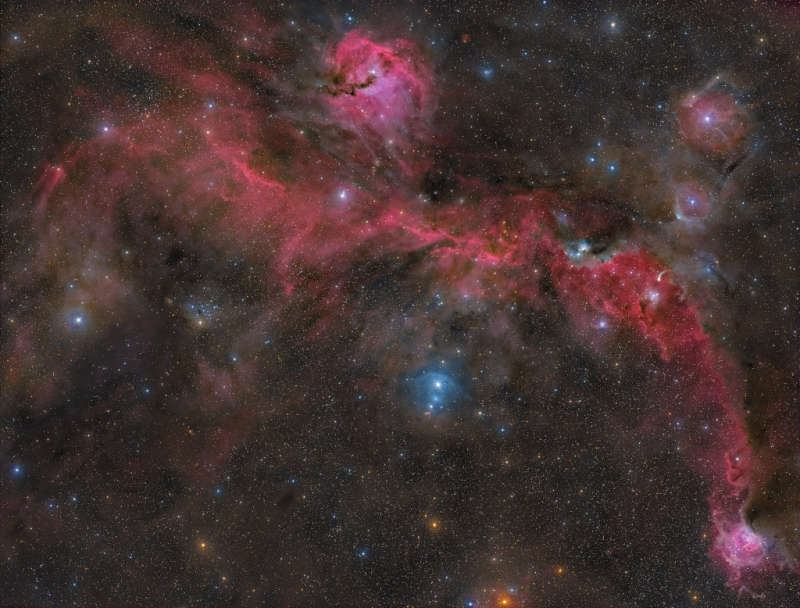
|
Credit & Copyright: Timothy Martin
Explanation:
An interstellar expanse of glowing gas and obscuring dust presents
a bird-like visage to astronomers from planet Earth,
suggesting its popular moniker, the
Seagull Nebula.
This broadband
portrait of the cosmic bird
covers a 3.5-degree wide swath across the plane of the Milky Way, in the
direction of Sirius,
alpha star of the constellation of the Big Dog
(Canis Major).
The bright head of the Seagull Nebula is cataloged as IC 2177,
a compact, dusty emission and reflection nebula with
embedded massive star HD 53367.
The larger
emission region,
encompassing objects with other catalog designations, is
Likely
part of an extensive shell structure
swept up by successive supernova explosions.
The notable bluish arc below and right of center is a bow shock from
runaway star
FN Canis Majoris.
Dominated by the reddish glow of atomic hydrogen,
this complex of interstellar gas and dust clouds with other stars of the
Canis
Majoris OB1
association spans over 200 light-years at the Seagull Nebula's estimated
3,800 light-year distance.
|
January February March April May June July August September October November December |
| |||||||||||||||||||||||||||||||||||||||||||||||||||||||
NASA Web Site Statements, Warnings, and Disclaimers
NASA Official: Jay Norris. Specific rights apply.
A service of: LHEA at NASA / GSFC
& Michigan Tech. U.
Based on Astronomy Picture
Of the Day
Publications with keywords: emission nebula
Publications with words: emission nebula
See also:
- APOD: 2025 September 19 B The NGC 6914 Complex
- APOD: 2025 September 10 B The Great Lacerta Nebula
- APOD: 2025 July 21 B Cats Paw Nebula from Webb Space Telescope
- APOD: 2025 July 16 B The Rosette Nebula from DECam
- APOD: 2025 July 5 B Ou4: The Giant Squid Nebula
- NGC 6164: A Dragon s Egg
- APOD: 2025 February 18 B Thors Helmet versus the Seagull
